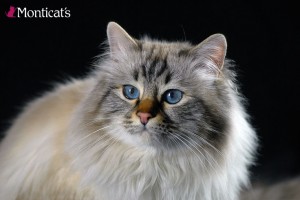Lo Standard

Otto
Lo Standard, che cos’è ?
Ogni gatto, di razza e non, discende dalla famiglia dei felidi (genere Felis).
Quindi, se ogni gatto è fatto allo stesso modo, com’è possibile che esistano così tanti gatti, così diversi tra loro?
Gatti grandi, gatti minuti, gatti con la tesa rotonda, gatti con la testa cuneiforme, gatti con orecchie grandi come parabole, gatti con orecchie piccolissime, gatti nudi, gatti pelosissimi … e potremmo andare avanti all’infinito.
La selezione attuata dalla natura prima, e dall’uomo poi, ha fatto tutto questo.
Se analizziamo un gatto, ci accorgeremo con facilità che ogni soggetto ha delle piccole differenze rispetto ad un altro.
Perciò, affinchè sia possibile differenziare tra loro i gatti, in base alle loro caratteristiche, ecco che ricorriamo allo Standard.
Quando un gatto viene portato in una expo felina, viene confrontato con lo Standard; quanto più si avvicina alla descrizione in esso contenuta, tanto più il soggetto é pregevole.
Racchiude inoltre note storiche e una descrizione – più o meno accurata – di tutte le parti corporee del gatto: testa, orecchie, corpo, coda, zampe, etcc.
E’ abbastanza evidente che trattandosi di una descrizione, questa può andare incontro a “interpretazioni personali” da parte di chi lo legge o lo applica, ed in particolare quando alcune parti corporee sono descritte con poca precisione.
Alcune delle descrizioni contenute nello Standard possono apparire ostiche a chi non è pratico, comunque con un po’ di impegno non é impossibile farsi un quadro visivo di ciò che viene descritto.
E’ importante evidenziare a chi legge che il gatto che viene ceduto come “gatto da expo”, non è una garanzia che il gatto, se portato in expo, sicuramente vincerà!
Proprio, perché:
- Lo standard non è unico e uguale in tutte le esposizioni feline;
- Lo standard è soggetto ad “interpretazioni” da parte di chi lo legge e lo applica;
- Da ultimo perché un cucciolo, ritenuto da expo all’età di tre mesi, con la crescita potrebbe sviluppare difetti che prima non erano evidenti e/o prevedibili.
Allevare significa porsi come obbiettivo la realizzazione di quanto descritto dallo Standard.
Lo Standard del Gatto Sacro di Birmania detto anche Birmano WCF.
Lo Standard del Gatto Birmano, non è uguale in tutte le Associazioni Feline.
E’ molto simile ma non identico.
Perciò, riportiamo qui di seguito, lo Standard del World Cat Federation (WCF) presso il quale il nostro affisso è registrato.
Il testo è in inglese. Non appena sarà disponibile le traduzioni ufficiali in lingua italiana, sarà nostra cura pubblicarla:
WCF Standard (tratto da wcf-online.de)
Body: Medium sized cat with strong boning and well developed musculature. Body medium in weight and slightly elongated. Low legs, feet broad and gently rounded. Tail medium in length, elegant in shape, plume-like.
Head: Blunt triangle with rounded contours. High set cheek bones, well rounded cheeks, forehead slightly convex. Profile gently curved; Roman nose of medium length; well developed chin.
Ears: Medium in size, about as high as broad at the base, slightly rounded at the tip; set upright and well apart.
Eyes: Deep blue in colour; not quite round but slightly oval shaped; set well apart.
Coat: Long to medium-long and silky in texture, little undercoat. Facial hair short, growing longer on the cheeks, developing into a full ruff. Very long fur on back and flanks.
Color Varieties: The Birman is a colourpointed cat , any point colour (except cinnamon and fawn) is accepted.
Their unique characteristic are their white gloves and laces. ,,Gloves” means the white markings on all four paws. Above all, evenness and symmetry of gloves are of essential importance. Be it matching symmetry of the front gloves on the one hand or matching symmetry of the rear gloves on the other hand; or even better, evenly matched gloves of all four paws. The colour is absolute pure white; it can end at the third joint or at the joint, it may not extend on the leg. Allowance is made for somewhat longer rear gloves.
,,Laces” means the white markings on the soles of the rear feet, tapering up to a tip. Symmetry of the two laces is desirable. Ideally, laces end in the middle of the metatarsal bone.
Faults: Spots of white (outside of the gloves and laces) can lead to DQ. Runners are streaks of white extending beyond the standard form of gloves. A belly patch is a point coloured patch on the underside of the body.
Withhold CACIB: Lack of laces, also belly patch. Minor flank spots and stripes may be tolerated.
The general type may neither resemble to a Persian cat nor may it tend to the other extreme, resembling the Siamese look.
Scale of points:
Body 20 points
Head and Eyes 20 points
Gloves (front paws) 5 points
Gloves (back paws) 5 points
Laces (back paws) 5 points
Evennes 5 points
Tail 10 points
Coat 10 points
Body colour and point colour 15 point
Condition 5 point